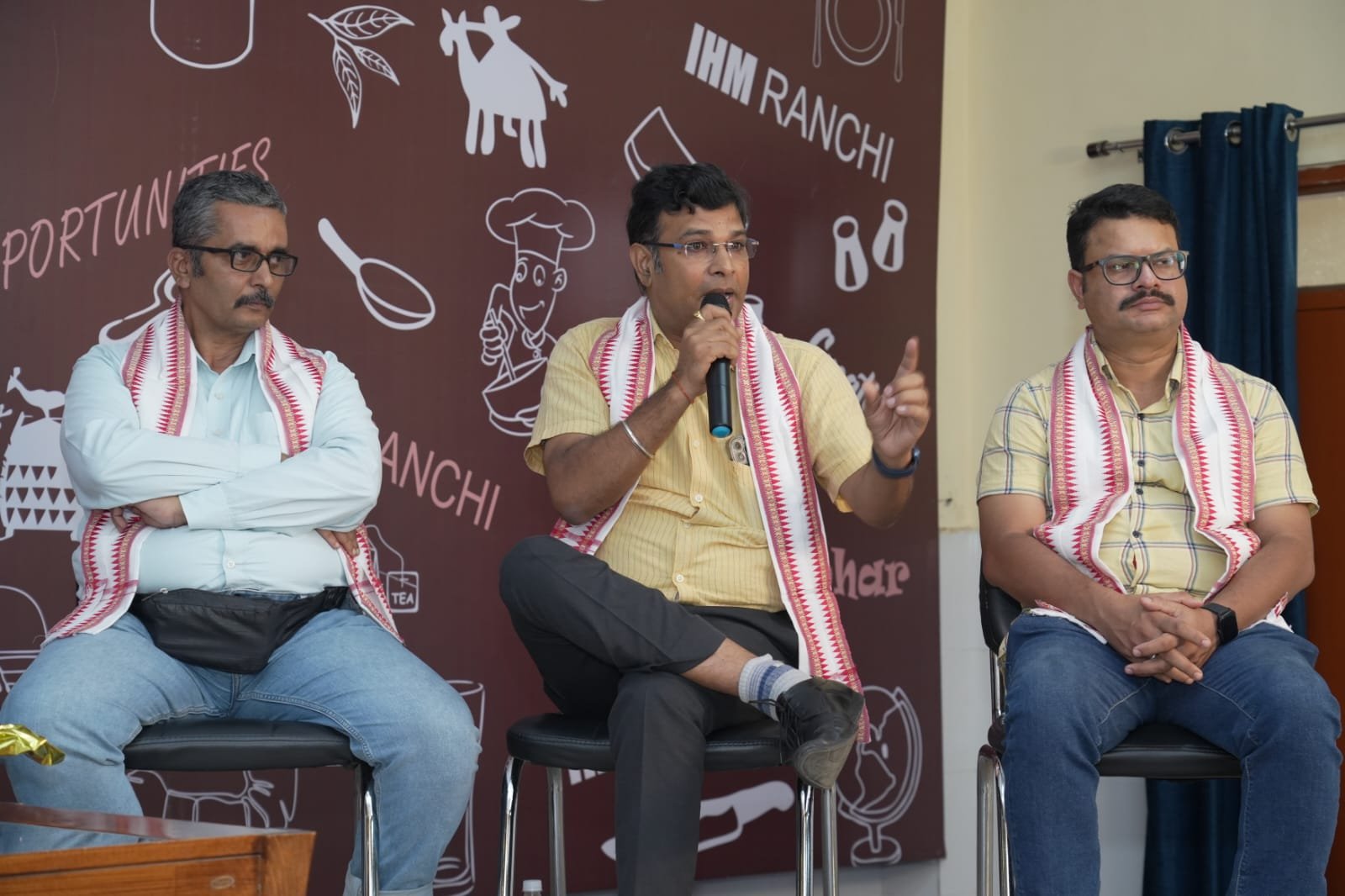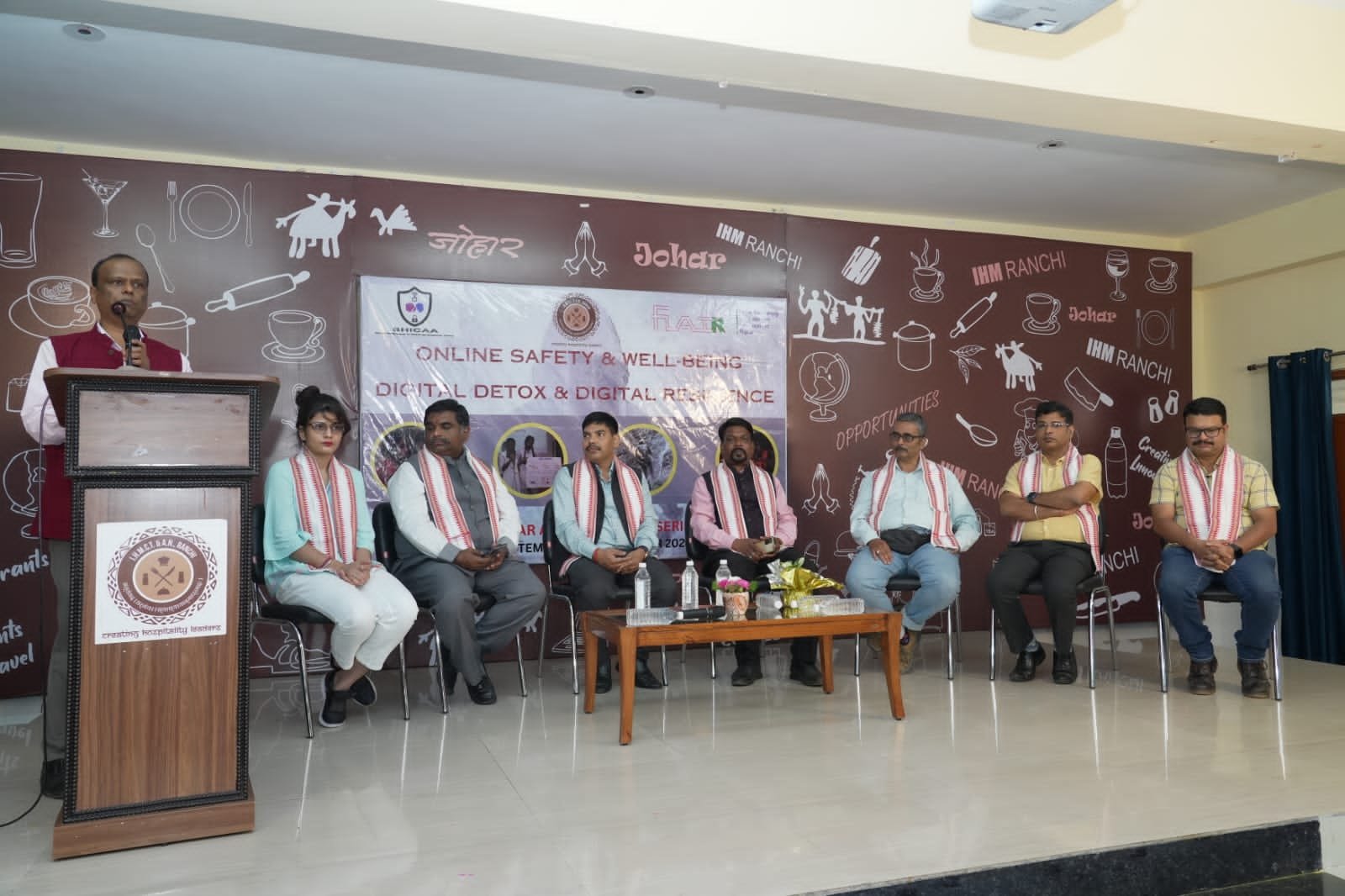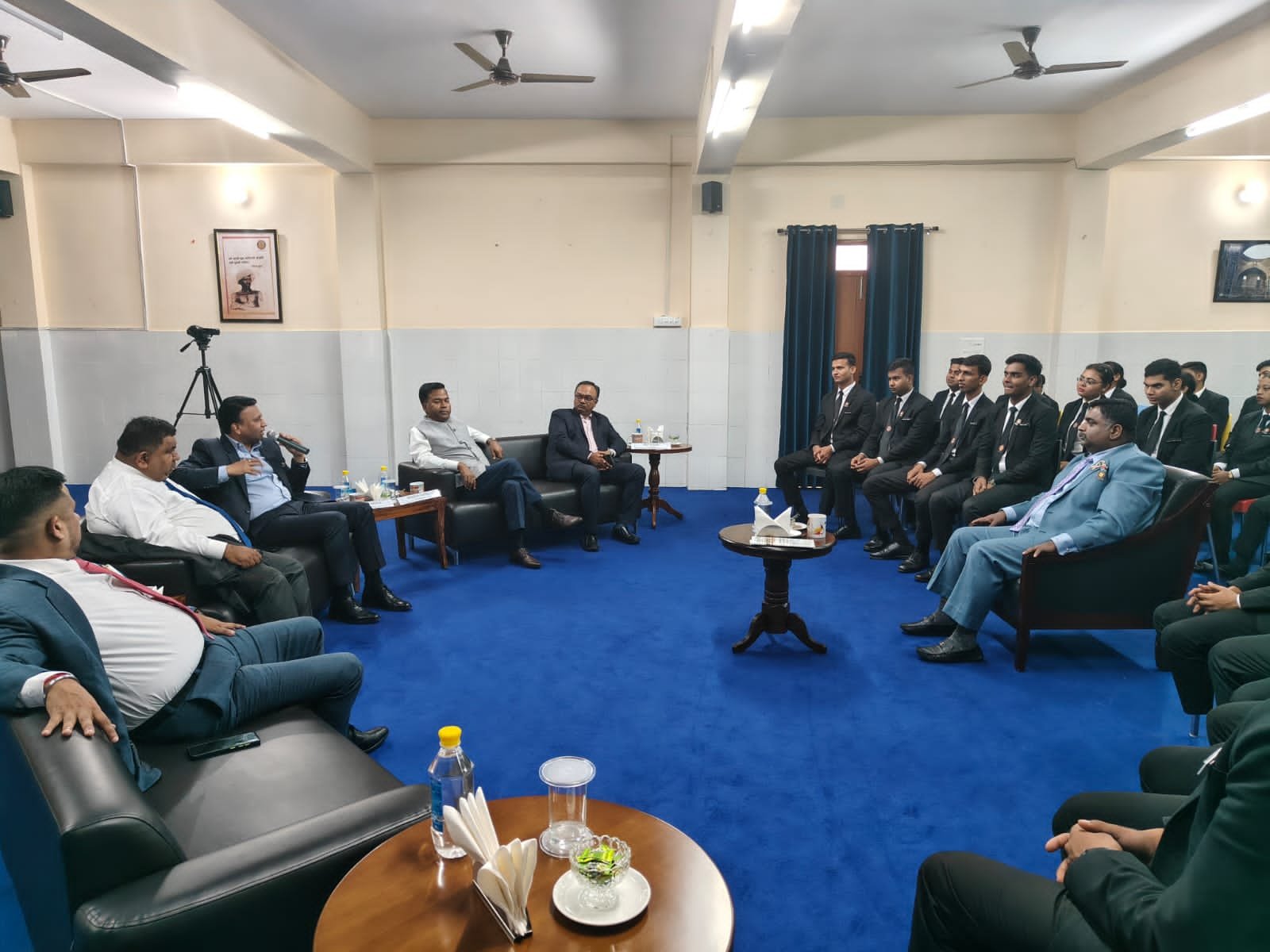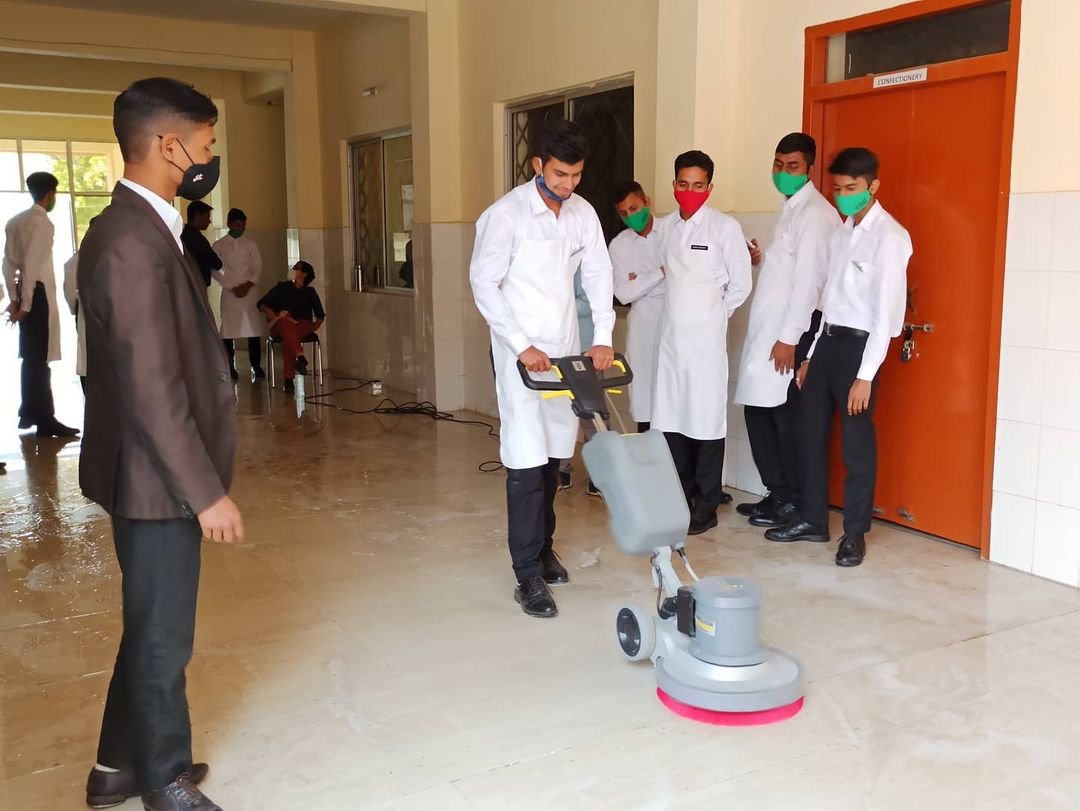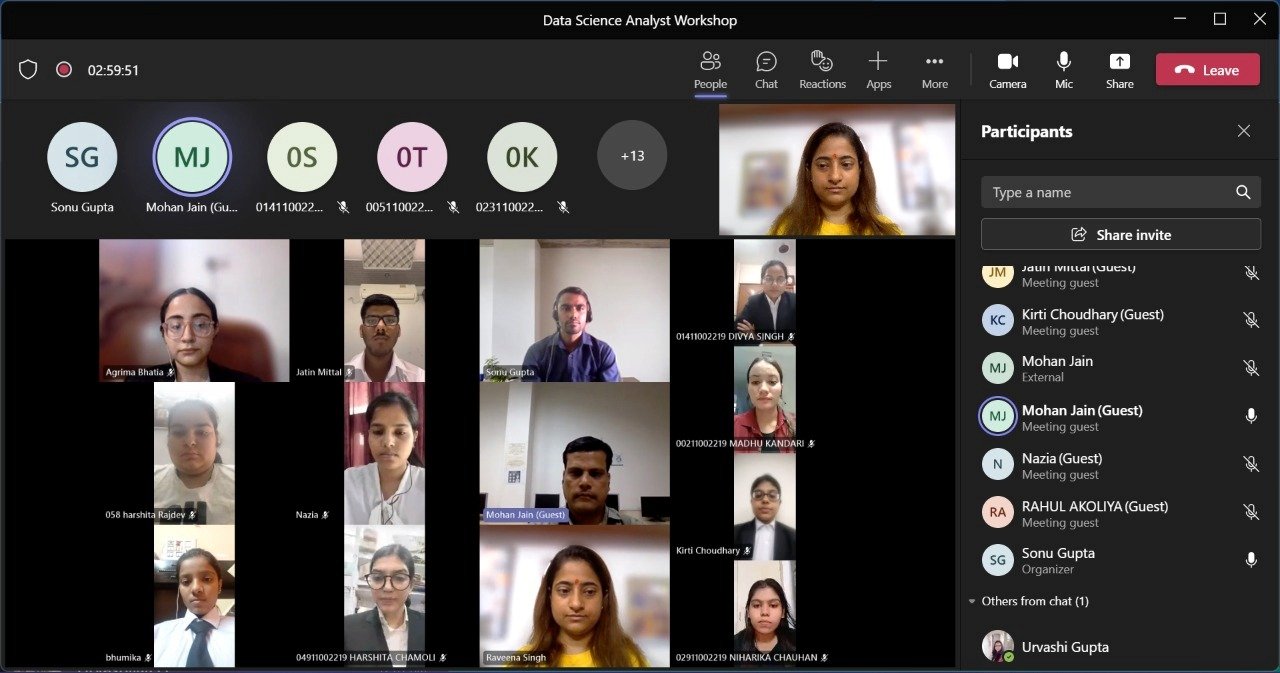Ingredient Ideology | Farm To Fork Trend In The Culinary Business, By: Dr. Kaviraj Khialani- Celebrity Master Chef.
/Introduction To Trends In The Food Business Post Covid.
In the wake of the COVID-19 pandemic, the food business has witnessed several noteworthy trends. Online food delivery and takeout services have surged, with consumers increasingly embracing the convenience of ordering food from their smartphones. Contactless dining has become a norm, characterized by QR code menus and mobile payment options, offering a safer and more efficient dining experience. Health and wellness have gained prominence, leading to a heightened demand for healthier and more transparent food choices, including plant-based and functional foods. The focus on local sourcing and sustainability has grown, as consumers seek locally-produced and eco-friendly food products. Automation and robotics are being adopted to address labor shortages, and culinary innovation is flourishing with the introduction of unique menu items, inspired by the need to stand out in a competitive market. These trends are shaping the post-COVID food business, emphasizing adaptability and a commitment to meeting evolving consumer demands.



WHAT IS FARM TO FORK CONCEPT?
The "farm to fork" concept, often referred to as "farm to table," is a holistic approach to food production, distribution, and consumption that emphasizes the traceability and transparency of the food supply chain. This concept aims to ensure that food is sourced, produced, processed, and delivered to consumers with minimal intermediaries and maximum freshness. It promotes sustainability, reduces food miles (the distance food travels from its source to consumers), and fosters a connection between consumers and the origins of their food.
Key components of the Farm to Fork concept include:
Local Sourcing: Prioritizing food sourced from nearby farms and producers, which reduces transportation and supports local economies.
Sustainability: Promoting environmentally friendly and responsible farming and food production practices, such as organic farming and reduced pesticide use.
Transparency: Providing consumers with information about the origins of their food, including the location of farms, production methods, and potential certifications (e.g., organic or fair trade).
Seasonality: Encouraging the consumption of foods that are in season, which is both environmentally sustainable and often more flavorful.
Shorter Supply Chains: Reducing the number of intermediaries between producers and consumers, which can lower costs and improve food safety.
Quality and Freshness: Prioritizing the delivery of fresh, high-quality products to consumers, which can enhance flavor and nutritional value.
The farm to fork concept not only supports local agriculture and sustainable practices but also fosters a deeper connection between consumers and their food sources. It empowers consumers to make informed choices about the food they consume and contributes to a more sustainable and resilient food system.
WHAT ARE THE MINUS POINTS OF FARM TO FORK CONCEPT.
The Farm to Fork concept is a European Union (EU) initiative aimed at creating a more sustainable and environmentally friendly food system. While it has several potential benefits, it also has its critics, who point out some of its potential drawbacks and challenges:
Economic Concerns: Critics argue that the Farm to Fork strategy could lead to increased production costs for farmers due to stricter regulations and sustainability requirements. This may affect the competitiveness of EU farmers in the global market.
Trade Implications: The initiative's ambitious goals could potentially lead to trade tensions with countries that have different agricultural and environmental standards. It may also impact the EU's ability to access a diverse range of affordable food products.
Food Security: Some critics worry that the emphasis on sustainability and reduction in certain agricultural practices may reduce food production, which could impact food security and affordability for EU citizens.
Innovation and Technology: The Farm to Fork concept's focus on sustainability may discourage the adoption of innovative agricultural technologies and biotechnology, potentially slowing down progress in increasing agricultural productivity and resilience.
Transition Challenges: Implementing such a major shift in the food system will require a significant transition period, which may be challenging for both farmers and the food industry. Adjusting to new practices and standards can be costly and time-consuming.
Rural Communities: Some rural communities may be disproportionately affected by the changes associated with the Farm to Fork strategy, as it may lead to changes in land use and agricultural practices that impact local economies and livelihoods.
Consumer Costs: Stricter sustainability standards and regulations may lead to higher food prices, which could impact consumers' ability to access affordable and diverse food options.
Balancing Environmental and Economic Goals: Balancing environmental sustainability with economic sustainability is a significant challenge. It's crucial to ensure that efforts to protect the environment do not come at the cost of farmers' incomes and economic viability.
It's important to note that the Farm to Fork concept is designed to address the growing concerns about the environmental impact of the food system and promote healthier and more sustainable food production. While there are potential drawbacks and challenges, proponents argue that the long
term benefits in terms of environmental sustainability and improved public health justify the initiative's goals. However, finding the right balance between these objectives is a complex and ongoing process.
WHAT KIND OF MENUS CAN BE MADE KEEPING IN MIND THE FARM TO FORK CONCEPT.
Creating menus with the Farm to Fork concept in mind involves prioritizing locally sourced, seasonal, and sustainably produced ingredients. The idea is to reduce the environmental footprint of food production and promote healthier, more responsible eating. Here are some types of menus that can align with the Farm to Fork concept:
Seasonal Menus: Design your menu around the availability of seasonal produce. This not only ensures freshness but also reduces the need for long-distance transportation and energy-intensive greenhouse cultivation. For example, in the summer, your menu might feature dishes with fresh tomatoes, zucchini, and berries, while in the winter, you could focus on root vegetables and hearty greens.
Locally Sourced Menus: Prioritize ingredients from local farms and suppliers to support the regional economy and reduce the carbon footprint associated with food transportation. Consider creating a "local farmer spotlight" section on your menu to highlight the sources of your ingredients.
Sustainable Seafood Menus: If your menu includes seafood, choose sustainable seafood options that are sourced responsibly, taking into account overfishing and the preservation of marine ecosystems. Organizations like the Marine Stewardship Council can help you identify sustainable seafood choices.
Plant-Based Menus: Promote plant-based and vegetarian options on your menu to reduce the environmental impact of meat production. Highlight dishes with a variety of vegetables, legumes, and whole grains, making them delicious and appealing to a broad audience.
Farm-to-Table Menus: Partner directly with local farms and feature their products prominently on your menu. This can involve creating relationships with farmers and featuring a "farm of the month" to showcase different local producers.
Organic and Non-GMO Menus: Prioritize organic ingredients and non-genetically modified organisms (GMO) to support sustainable farming practices and healthier food choices.
Reduced Food Waste Menus: Implement strategies to minimize food waste, such as using every part of an ingredient, composting kitchen scraps, and designing dishes that can incorporate surplus ingredients creatively.
Ethical Animal Farming Menus: If you serve animal products, opt for meats, dairy, and eggs that come from farms with high animal welfare standards and sustainable practices. This includes sourcing products from farms that provide more humane living conditions and feed animals a more environmentally responsible diet.
Reduced Processed Foods Menus: Minimize the use of highly processed and pre-packaged ingredients in your dishes. Fresh and minimally processed ingredients are not only healthier but also more in line with the Farm to Fork concept.
Education and Transparency: Consider adding information about the origin and sustainability of your ingredients to your menu. This can educate diners about the Farm to Fork concept and highlight your commitment to responsible sourcing.
Ultimately, creating menus aligned with the Farm to Fork concept involves a commitment to sourcing, preparation, and presentation that emphasizes sustainability, local production, and responsible agriculture practices. It can help differentiate your restaurant or food service business while contributing to a more environmentally and socially responsible food system.
IS FARM TO FORK CONCEPT GETTING POPULAR IN METRO CITIES LIKES MUMBAI? WHAT ARE THE CHALLENGES BEING FACED.
The Farm to Fork concept, which emphasizes sustainable and local food sourcing, has been gaining popularity in many metro cities around the world, including Mumbai, India. However, it's important to note that the extent of its popularity and adoption can vary within different regions and communities. Here are some factors to consider regarding the popularity of the Farm to Fork concept in Mumbai and the challenges it may face:
Popularity:
Growing Awareness: There is a growing awareness and interest in sustainable and locally sourced food in Mumbai, as in many other urban areas. Consumers are increasingly conscious of the environmental and health impacts of their food choices.
Emerging Restaurants and Cafes: Many restaurants and cafes in Mumbai are embracing the Farm to Fork concept. They are featuring menus that highlight local and seasonal ingredients, and some even establish direct relationships with local farmers and suppliers.
Farmers' Markets: Farmers' markets and community-supported agriculture (CSA) initiatives are becoming more common in and around Mumbai. These platforms enable consumers to access fresh, local produce directly from farmers.
Food Delivery Services: Some food delivery platforms are now focusing on promoting sustainable and locally sourced meals to cater to the demand for Farm to Fork offerings.
Challenges:
Logistics and Supply Chain: Mumbai's densely populated and urban environment presents challenges in sourcing enough local produce to meet the demands of the city's population. Building efficient and sustainable supply chains can be a logistical challenge.
Seasonal Variability: The availability of certain ingredients can be limited by season, which may make it challenging for restaurants to maintain consistent menus and for consumers to access their favorite dishes year-round.
Consumer Education: Many consumers in Mumbai may not be fully aware of the Farm to Fork concept and its benefits. Restaurants and food providers may need to invest in educating customers about the importance of local and sustainable sourcing.
Price Sensitivity: High real estate and operational costs in Mumbai can make it challenging for restaurants to offer Farm to Fork menus at competitive prices, potentially limiting accessibility for some segments of the population.
Regulatory Hurdles: Compliance with food safety and hygiene regulations while sourcing from local and smaller-scale producers can sometimes pose challenges.
Balancing Tradition and Innovation: Mumbai has a rich culinary tradition that includes various regional and international cuisines. Balancing this tradition with innovative Farm to Fork offerings can be a creative challenge for chefs and restaurant owners.
Despite these challenges, the Farm to Fork concept is gradually gaining ground in Mumbai, driven by consumer demand for healthier and more sustainable dining options. Overcoming logistical and awareness-related challenges will be important for its continued growth in the city. Additionally, government support and incentives for sustainable and local food production can also play a significant role in promoting the concept.
5 RECIPES WHICH CAN BE DONE BETTER USING FARM TO FORK CONCEPT
The Farm to Fork concept emphasizes the use of locally sourced and seasonal ingredients to create more sustainable and flavorful dishes. Here are five recipes that can be improved by applying this concept:
Caprese Salad:
Ingredients:
4 large ripe tomatoes (locally sourced if possible)
8 ounces (about 225 grams) fresh mozzarella cheese
1 bunch of fresh basil leaves
Extra virgin olive oil (high-quality and locally produced)
Balsamic vinegar (optional)
Sea salt and freshly ground black pepper, to taste
Method:
Prepare the Ingredients:
Wash and dry the tomatoes and basil leaves.
Slice the tomatoes into 1/4-inch thick rounds.
Slice the fresh mozzarella cheese into 1/4-inch thick rounds as well.
Pick the basil leaves from the stems.
The tomato, mozzarella, and basil slices, slightly overlapping them.
Drizzle extra virgin olive oil generously over the salad.
If desired, you can also drizzle a small amount of balsamic vinegar for extra flavor.
Season the salad with sea salt and freshly ground black pepper to taste.
Vegetable Stir-Fry:
Ingredients:
For the Stir-Fry Sauce:
1/4 cup soy sauce
2 tablespoons oyster sauce (or hoisin sauce for a vegetarian option)
2 tablespoons rice vinegar
1 tablespoon honey or brown sugar
1 teaspoon cornstarch
1 tablespoon vegetable oil (locally sourced if possible)
1 pound (450 grams) mixed vegetables, such as bell peppers, broccoli, carrots, snap peas, and mushrooms, thinly sliced or chopped
2 cloves garlic, minced
1-inch piece of fresh ginger, grated or minced
1 block of tofu, chicken, shrimp, or beef (optional), cut into bite-sized pieces
Method:
In a small bowl, whisk together the soy sauce, oyster sauce (or hoisin sauce), rice vinegar, honey (or brown sugar), and cornstarch. Set this sauce aside.
Wash and chop the mixed vegetables. You can use any combination you prefer or what's in season.
If using protein (tofu, chicken, shrimp, beef), prepare it by cutting it into bite-sized pieces.
Heat the Oil:
Heat the vegetable oil in a large skillet or wok over medium-high heat.
Add the chopped vegetables to the skillet. Stir-fry for 3-5 minutes until they start to become tender but still crisp. You can adjust the cooking time based on your preference for the level of doneness.
Grilled Cheese Sandwich:
Ingredients:
2 slices of high-quality artisanal bread (locally sourced if possible)
2-3 ounces (about 60-85 grams) of your favorite cheese, such as cheddar, Swiss, or mozzarella
1-2 tablespoons of butter (locally sourced if available)
Optional additions: tomato slices, cooked bacon, or caramelized onions
Method:
Lay out the two slices of bread.
Place the cheese (and any optional additions) between the slices of bread to create a sandwich.
Spread a thin layer of butter on the outside of each slice of bread. This will give the sandwich a golden, crispy exterior when grilled.
Heat a non-stick skillet or a griddle over medium heat. You can also use a panini press or a sandwich press if you have one.
Place the buttered side of the sandwich down in the hot skillet.
Grill for 2-3 minutes on each side, or until the bread is golden brown and the cheese is melted. If using a sandwich press, follow the manufacturer's instructions.
Farm-to-Table Saag Paneer:
Ingredients:
Locally sourced paneer (cottage cheese)
Fresh, seasonal leafy greens like spinach, mustard greens, or fenugreek leaves
Organic and locally produced spices (cumin, coriander, turmeric)
Fresh tomatoes and onions from local farms
Method:
Use locally sourced and farm-fresh paneer.
Incorporate seasonal leafy greens, ensuring they are freshly
harvested.
Make a rich tomato-based gravy with fresh tomatoes and onions.
Spice it with local and sustainably produced spices.
Serve with locally sourced rice or bread.
Seasonal Vegetable Pulao:
Ingredients:
Seasonal vegetables like peas, carrots, and beans from local farms
Locally sourced Basmati rice
Fresh herbs and spices from nearby markets
Local ghee or vegetable oil
Method:
Use locally sourced Basmati rice.
Incorporate seasonal vegetables from local farms.
Spice the pulao with fresh herbs and spices from nearby markets.
Cook in local ghee or vegetable oil for an authentic and sustainable touch.
Serve the Vegetable Pulao with locally produced yogurt or raita.
CONCLUSION
In conclusion, the Farm to Fork concept promotes a more sustainable and responsible approach to food sourcing and consumption. It emphasizes the use of locally grown, seasonal, and sustainably produced ingredients to create healthier, environmentally friendly, and flavorful dishes. This concept has gained popularity in many metro cities, including Mumbai, as consumers become increasingly aware of the benefits of supporting local agriculture and reducing the environmental impact of the food system.
While the Farm to Fork concept offers numerous advantages, including fresher and more flavorful ingredients, support for local economies, and reduced carbon emissions, it also faces challenges. These challenges include logistical and supply chain issues, seasonal variability in ingredient availability, the need for consumer education, price sensitivity, regulatory hurdles, and the balancing of tradition and innovation in culinary offerings.
To fully realize the potential of the Farm to Fork concept, it is important for businesses, restaurants, and consumers to collaborate in sourcing and promoting local, sustainable, and seasonal ingredients. By doing so, we can contribute to a more responsible and resilient food system that benefits both our health and the environment.
















